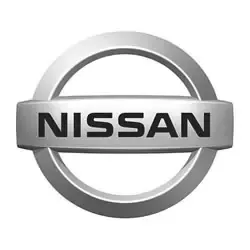Nissan 350Z Tire Pressure
Most common recommended tire pressure for Nissan 350Z can range from 32 psi to 35 psi depending on year of production, trim and OEM tire size, but it maybe different for older models. It is imperative to confirm the exact tire inflation for your Nissan 350Z to ensure safety on the road. Always refer to your vehicle owner's manual for the correct tire pressure designated by vehicle's manufacturer.
Select your Nissan 350Z production year to see its recommended tire inflation.
| Model Year | Front Tires | Rear Tires |
|---|---|---|
| 2009 Nissan 350Z | 35 psi | 35 psi |
| 2008 Nissan 350Z | 35 psi | 35 psi |
| 2007 Nissan 350Z | 35 psi | 35 psi |
| 2006 Nissan 350Z | 35 psi | 35 psi |
Recommended Tire Pressure for Nissan 350Z
Maintaining the recommended tire pressure for a Nissan 350Z is paramount for ensuring optimal performance, safety, and longevity of both the tires and the vehicle. This sports car, known for its impressive handling and agility, relies heavily on precisely calibrated tire pressure to maintain its celebrated driving dynamics. Correct tire pressure affects a multitude of factors; it ensures uniform tire wear, thereby extending the lifespan of the tires and reducing the frequency of replacements. It also plays a critical role in maximizing fuel efficiency, as properly inflated tires reduce rolling resistance, enabling the engine to work more efficiently. Most importantly, adhering to the manufacturer's recommended tire pressure enhances safety by improving the vehicle's grip on the road, which is crucial for emergency maneuvers and maintaining control in adverse weather conditions. Moreover, correct tire pressure minimizes the risk of tire blowouts, significantly contributing to driver and passenger safety. For the 350Z, adhering to Nissan's specified tire pressure is integral to preserving the vehicle's high-performance capabilities and ensuring a thrilling yet safe driving experience.

All listed guides, data and/or calculations are for informational purposes only. TirePressure.com does not warrant or make any representations regarding the accuracy of or the results of the use of this information. Always refer to vehicle owner's manual for the correct tire pressure configuration.